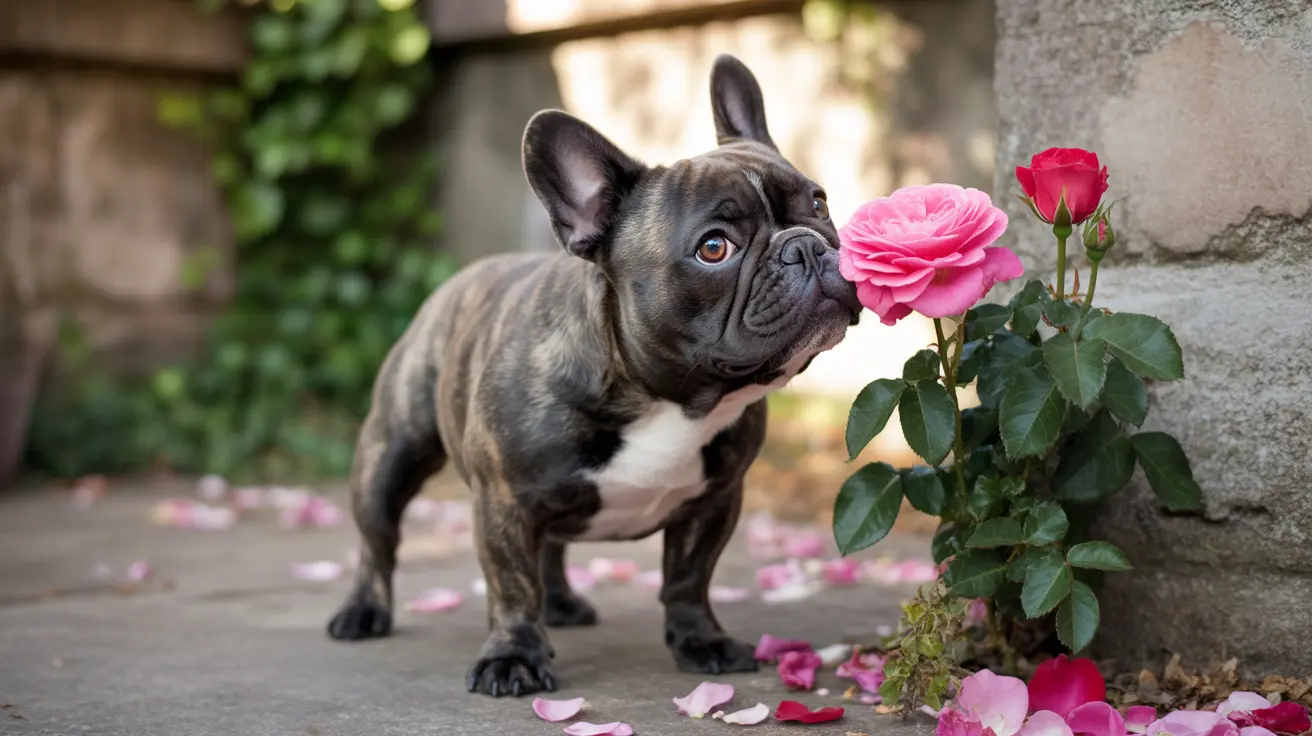Understanding the Safety of Roses for Dogs
True roses belonging to the Rosa genus are generally safe for dogs to consume. However, while the petals and leaves aren't poisonous, ingestion can still lead to mild stomach upset in some cases. The primary concerns come from physical hazards like thorns and potential chemical treatments applied to the plants.
Primary Risks When Dogs Eat Roses
Physical Hazards from Thorns
- Cuts and scratches in the mouth and throat
- Injuries to the face and paws
- Potential infections from puncture wounds
- Internal damage if swallowed
Digestive System Concerns
- Mild stomach upset
- Vomiting
- Diarrhea
- Potential blockages if large amounts are consumed
Chemical Treatment Dangers
- Pesticides
- Fungicides
- Herbicides
- Fertilizers
Signs Your Dog Needs Veterinary Care
Monitor your dog for these symptoms after rose ingestion:
Immediate Concerns
- Excessive drooling
- Pawing at the mouth
- Visible bleeding or scratches
- Difficulty swallowing
- Coughing or gagging
Delayed Symptoms
- Persistent vomiting
- Lethargy
- Loss of appetite
- Abdominal pain
- Constipation or diarrhea
Steps to Take After Your Dog Eats a Rose
Immediate Actions
- Check your dog's mouth for visible thorns or injuries
- Remove any accessible plant material
- Determine if the rose was chemically treated
- Monitor for immediate signs of distress
When to Call the Vet
- You notice signs of chemical exposure
- There are visible injuries from thorns
- Your dog shows severe or persistent symptoms
- Large quantities of rose material were consumed
Prevention Tips
- Keep dogs away from rose bushes
- Use fencing around garden areas
- Choose thornless varieties for your garden
- Avoid chemical treatments where possible
- Supervise outdoor activities
Frequently Asked Questions
Can dogs safely eat rose petals or other parts of true roses?
Yes, true roses (Rosa genus) are non-toxic to dogs. However, while the petals and leaves aren't poisonous, they may cause mild digestive upset if consumed in large quantities.
What are the risks if my dog eats roses with thorns or chemical treatments?
Thorns can cause physical injuries to the mouth, throat, and digestive tract. Chemical treatments like pesticides or fertilizers can be toxic and may require immediate veterinary attention.
What symptoms should I watch for after my dog ingests a rose?
Monitor for signs of oral injury (bleeding, pawing at mouth), digestive upset (vomiting, diarrhea), and potential chemical exposure symptoms (excessive drooling, lethargy, tremors).
How should I respond if my dog eats a chemically treated rose or large amounts of rose plant material?
For chemically treated roses or large quantity ingestion, contact your veterinarian immediately. Bring a sample of the plant if possible, and watch for signs of toxicity or blockage.
Are there plants that look like roses but are toxic to dogs?
Yes, several plants resembling roses are toxic to dogs, including desert rose (Adenium), peonies, and ranunculus. Always verify plant species before allowing dogs near them.
Conclusion
While true roses aren't toxic to dogs, various factors can make rose consumption dangerous. Being aware of the risks and taking quick action when needed will help ensure your dog's safety. When in doubt, always consult with your veterinarian, especially if your dog shows concerning symptoms after eating any part of a rose plant.






